See Introduction: Roscoe Fish Stories, January 2024
- Episode 1: Roscoe Fish Goes "Boying"! January 2024
- Episode 2: How Roscoe Fish Got His Name, February 2024
- Episode 3: The Journey Downriver, March 2024
- Episode 4: The Perilous Escape, March 2024
- Episode 5: Boying: The Lost Bait Can
A Rite of Spring
One sunny spring morning, just after the ice ceiling had disappeared from the top of the River, Roscoe braved the chilly swim over to the Frost Diner, dragging his deptherm. He hoped to take a reading of warm currents there that would signal the return of the fish clientele.
When he arrived, he whacked the tightly closed hatch cover with his tail. It immediately opened, and he rushed inside before it slammed shut against the icy-cold water. To Roscoe’s delight, there was a school of bullheads (a small type of catfish, sometimes called mudcats) lying on the diner’s floor enjoying an early breakfast.
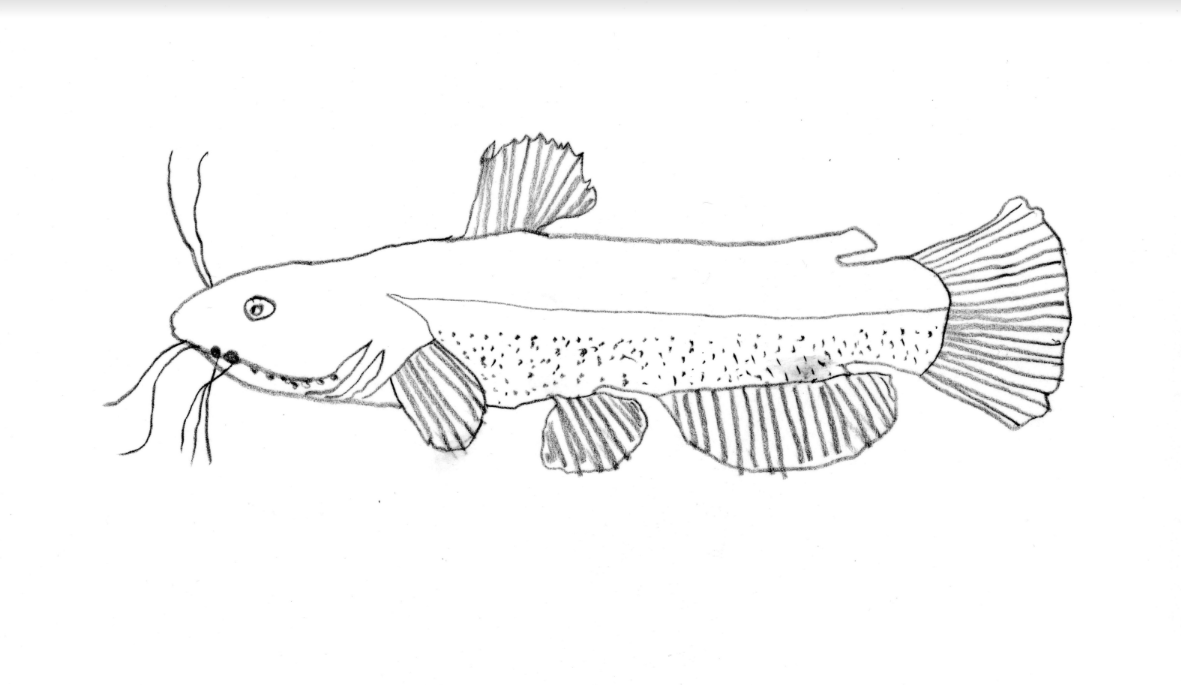
The arrival of bullheads marks the return of spring to the River, and Roscoe high-finned his old friend, their leader, named Amer – mindful to stay away from the nasty spines jutting from his nose. The bullheads pitch camp in the shallows at the heads of islands, where they bask in the sunny mud by day and patrol the marshy shoreline by night.
Roscoe was excited about the coming of spring this year. Over the winter, he had been taking a class and studying the Boying Manual to become a Boying Guide. At the graduation ceremony, he proudly had received an official Canadian Boying Guide license and badge. So he was eager to invite Amer, and his buddy Bully, to be his first clients for a boying adventure.
Roscoe knew that on the first warm spring day, the boys at Pine Island would go downriver for a fishing trip, loading up the little green outboard to visit the sandbanks off Grenadier Island. Typically, they trolled off the stern on the way, took their first swim in the chilly River, and picnicked midday on the sandy dunes. It would be a perfect activity for the mudcats as well – tracking the boys, playing hide and seek with their boat, and later burrowing into the cooler sand of the shallows downriver.
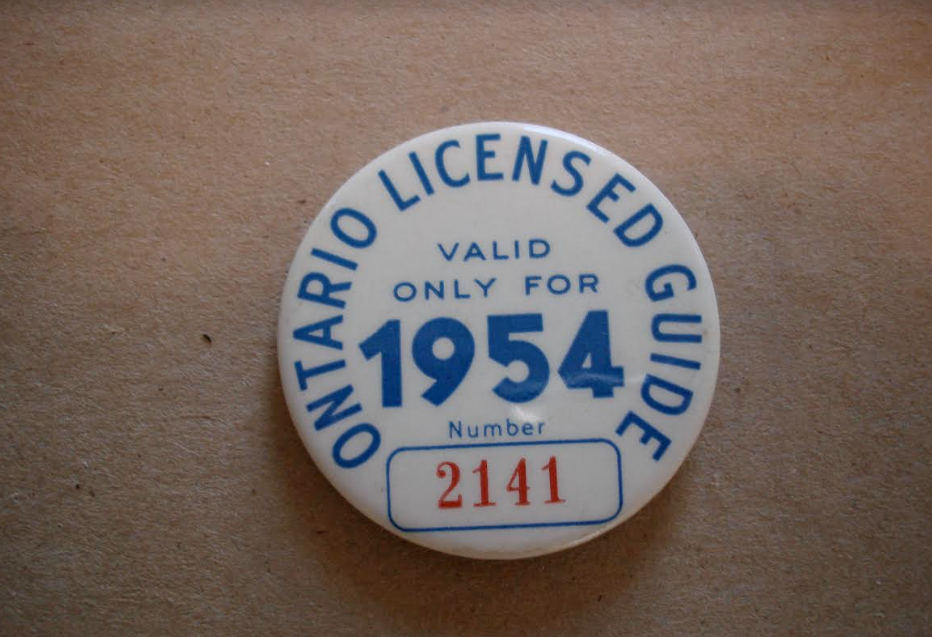
So, after breakfast at the diner, Roscoe sidled over to where the bullheads were finishing their meal and whispered to Amer, “Hey, would you and Bully like to head down to the sandbanks with me for a little boying on the next bright day?” Roscoe proudly swished a fin under the new Boying Guide badge that he had strung around his neck. Amer sucked in his breath. “That’s swell, Roscoe.” He nudged Bully, who was lying beside him slurping up the dregs of a slime shake, and pointed to the fancy license. Bully burped a stream of bubbles. “We’re in!” declared Amer.
“Weather indicators tell me that in two days it will be fair, and the deptherm says that warm water is entering the shallows,” proclaimed Roscoe with authority. “Let’s meet at the foot of Pine Island near the shoal on that morning. We’ll want to track them from the beginning of their trip.”
Roscoe could hardly sleep the night before, tossing and turning in the excitement of guiding his first boying adventure. Between Pine and Grenadier there is a wealth of islands with water paths known to fish and to boys, who have learned the River from their fathers and grandfathers. Roscoe imagined the route that the boys would take, mentally charting the marshes and coves, the underwater rocks and deep holes, until finally he dozed off.
At first light, Roscoe charged over to the Pine Island shoal, where Amer and Bully were already dug into the mud. They watched the boys padding back and forth from boathouse to dock, packing up the little green boat for their expedition.
The Boys
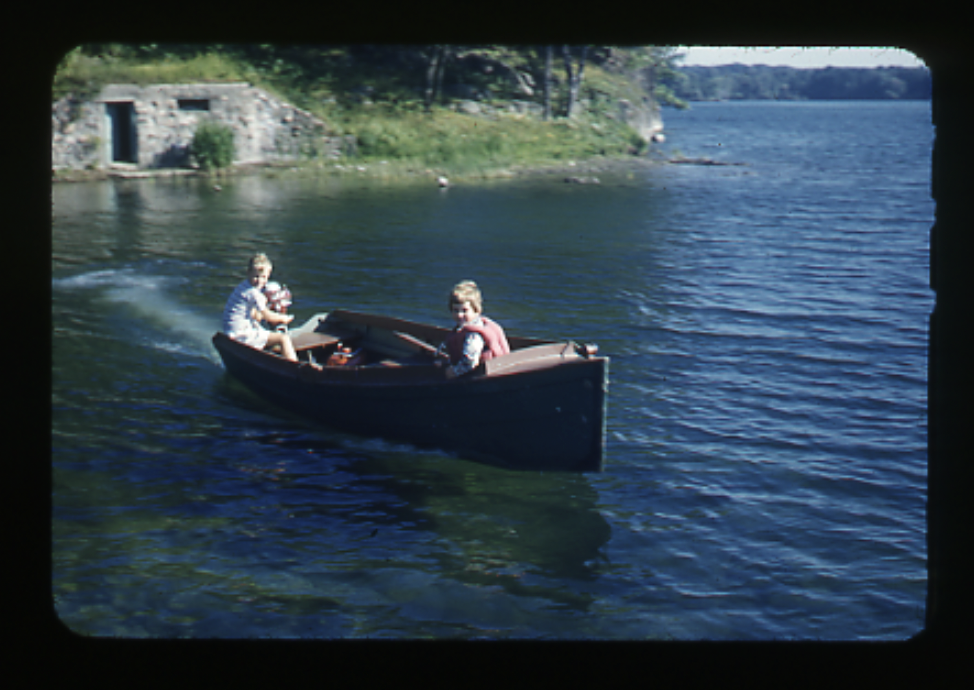
At breakfast the mother had declared: “The barometer is falling, so it looks like it’ll be a dandy fishing day.” Each morning, faithfully, she would tap the barometer to see whether it was rising or falling. Two taps – tap, tap. She seemed to know how the sky would look that day just from those taps. If the little black arrow on the barometer moved up a fraction, that meant that it would be clear like the day before. If it moved down a hair, then the weather would be changing, and showers were probably on the horizon.
The father liked to predict the weather from the shapes of clouds. He would look up and say, “Mackerel sky – 12 hours dry. Or, “I see mare’s tails” – meaning wispy clouds swishing across the sky like the tail of a running horse – “24 hours until rain.” He also checked for dew on the boats at night, which, he said, promised a clear sky the next day.
Christopher kept a daily log of water temperature, wind, and sea conditions and noted subtle signs that a weather front was approaching. Sometimes, when the wind changed direction from the west, the waves pushed swimmers out towards Fancy Rock, rather than in towards the swimming dock ladder. Sometimes, the boats in the slips beneath the boathouse began to creak and groan at their moorings, the sign of a rough sea from the east. When a thunderstorm was approaching, the sweet smell of ozone filled the air, and birds whirled crazily above the island.
On this day, the sunrise had been rosy, and there was unusual mugginess for May, but the boys welcomed the idea of a warm breeze and an early swim. They hurried to toss their lifejackets and oars, fishing gear, soda cans, and sandwiches on board. The water level was below the dock staves, as was often the case in early spring before the dam downriver was opened to allow it to rise, so the outboard was riding low in the slip.
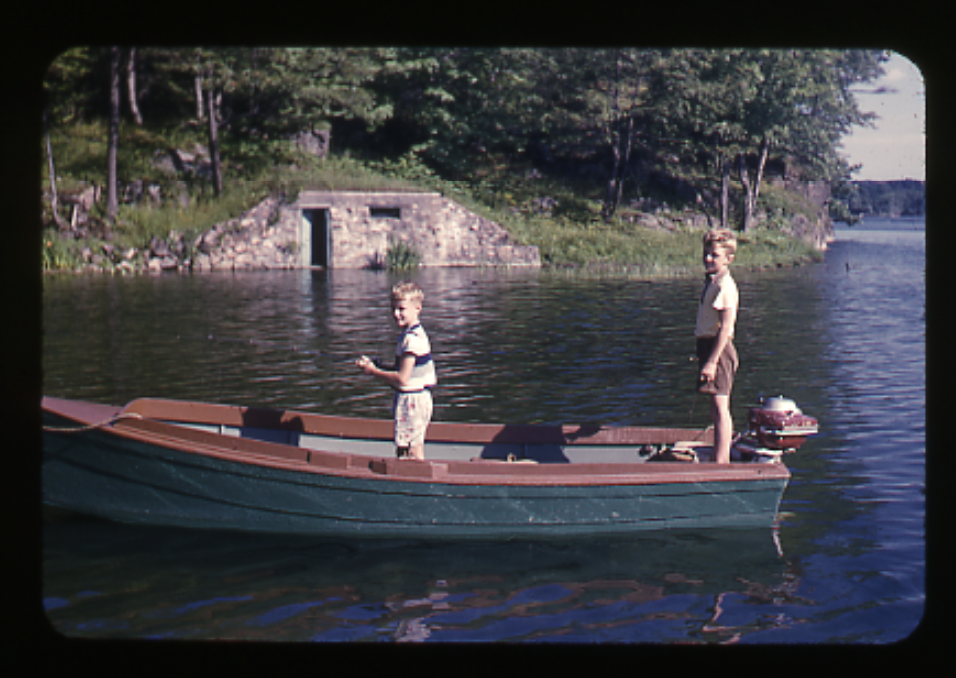
Roscoe had learned to study the boys’ movements to get boying ideas – to figure out how to play games on them – so he watched carefully as they loaded the outboard. One boy jumped into the boat and balanced on the middle seat, while another handed down the old silver minnow bucket that they used for a bait can.
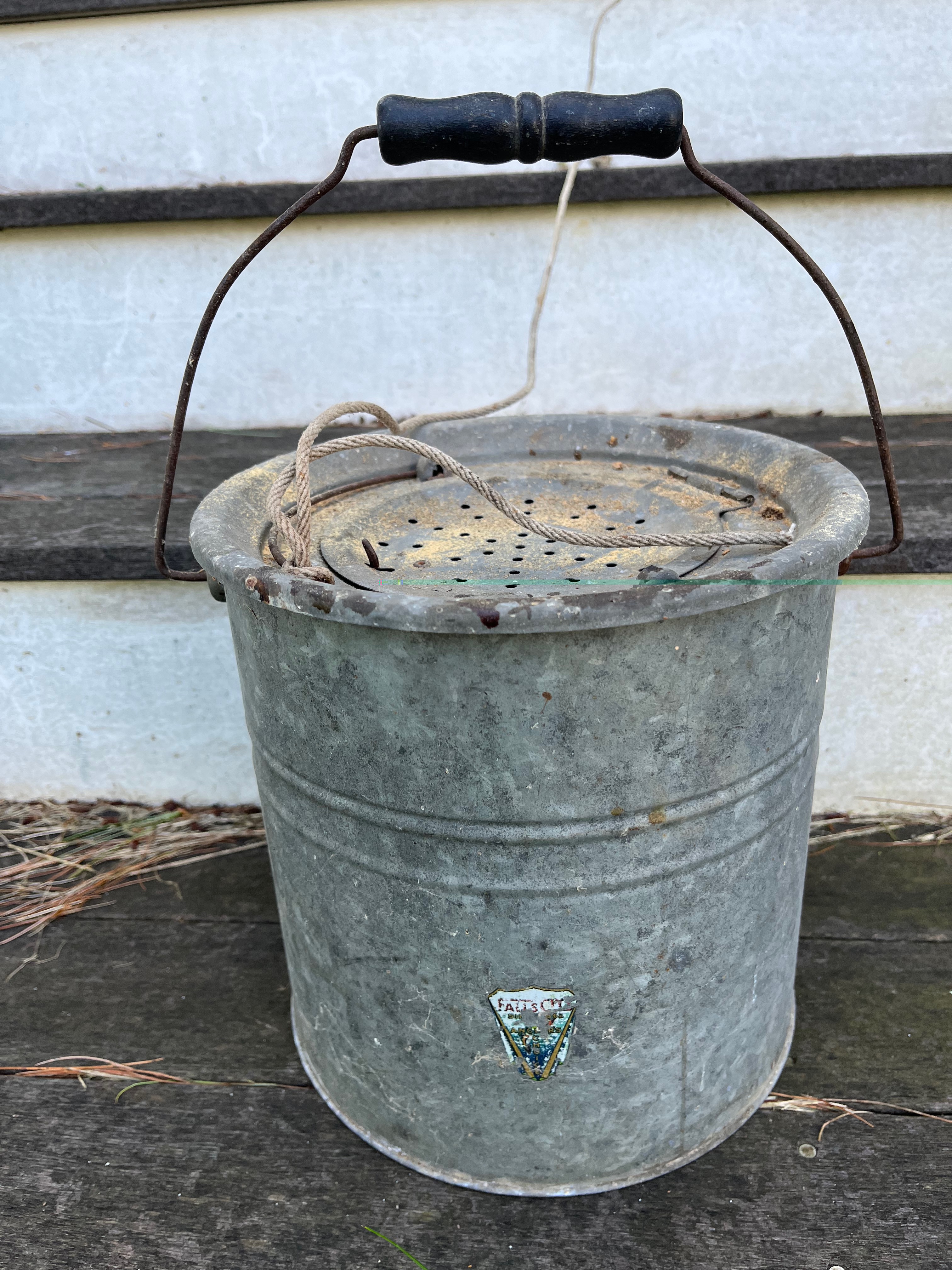
The boy on board hopped to the stern and lowered the perforated can over the side, letting it fill with water. He clipped it to a fraying Manila rope, which he tied onto a metal cleat on the boat’s transom. When the bait can was in place, the third boy passed down a tiny net full of small fry that he had dipped out of a bucket in the boathouse. The boy in the stern took the net, and, carefully cupping his hand over the top, signaled the second boy to raise the can’s lid. He then leaned over and dumped in the two dozen or so small fry. He snapped the latch in place to secure the lid and stowed the net on a hook under the seat.
With everything stowed and ready, the boys steered the little green boat towards the foot of Cleopatra Island, with Roscoe, Amer, and Bully close behind. Skirting the green buoy that marked the wide Canadian channel, Christopher, who was captain, turned into the passage between Tar Island and Little Grenadier. As they entered the lee of the islands, he shoved a dented tackle box from under the middle seat with his bare foot.
“Hey, why don’t you two start trolling,” he said. “Here are my father’s lures -– choose whichever one you want -– the bigger, the better.” The other boys surveyed the assortment of well-used lures. They both chose Skinner Spoons, which are made in two parts – a shiny silver oval blade shaped like a scallop shell at the top and, dangling underneath, a blaze of red-and-white feathers twisted together to conceal a nasty group of three or four hooks.
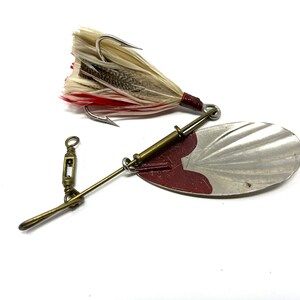
Roscoe declared to Amer and Bully in his official guide voice: “The Skinner Spoon Hook has been a favorite of anglers on the St Lawrence River for over a century, especially for those looking to catch Northern Pike and Muskellunge.”
Of course, Roscoe was very familiar with this lure, because it was the kind that belonged to Rocky’s uncle, the one that they had used in Rose’s chilling escape from the den of Quin, the giant Muskie, at the Forty Acre Shoal.
The boys let out their lines as the boat chugged along. In the stern seat, Christopher steered the outboard in and out of the coves, beside deep-water rocks, and along the weed beds, as he had been taught. He watched the shoreline as the islands slid by and pointed the bow towards Pitch Pine Point. He chose the shallow inner route because the water was warmer there in the early spring, even though the trolling lines might snag on the bottom. The bait can bumped along behind the stern; the small fry would be used for fishing the deeper holes farther downriver. Beside the bucket dangled a chain that the boys would thread through the gills of any fish they caught. Attached to the chain, the fish could swim alongside the boat to be kept or released later.
With Roscoe in the lead, the bullheads trailed a safe distance behind the little green boat, the nasty lures well out behind, until it reached Tar Island. Roscoe then suggested some antics for the bullheads to try while the boys trolled. As the boat slowed down after leaving the gut between Tar and Little Grenadier, Roscoe signaled Amer to make a quick pass under the hull. Seeing Amer through the crystal clear water, the boys let out a whoop. “Look at that!” Christopher cried, “It’s a huge bullhead!”
But Amer had retreated under an old dock near shore. Then Roscoe showed Bully how to tap the Skinner Spoon on its shiny blade and somersault away, missing the hook. Bully dashed at the spoon, flipped it with his fin and made a perfect back dive. The boy holding the rod jumped up. “I’ve had a strike!” he shouted, and wildly reeled in, only snaring the line, which went slack. Bully and Roscoe joined Amer under the old dock, blowing bubbles and smacking each other with their fins, delighted with their pranks.
The fish waited as the boys untangled and let out the trolling lines again. Then Roscoe offered to demonstrate his jumping skills. He sped off to get in front of the little green boat. Taking a deep gulp of water into his gills, he spun around vertically and, with a sweep of his tail, leapt out of the weed bed, clearing the water’s surface with his whole body. Splashing down, he left a perfect watery circle about 20 yards away from the boat. “Look at that!” The boy in the bow yelled. “A fish jumped! It was a really big bass! Quick – steer over there!”
But of course, Roscoe had disappeared. Skidding around the next rock, he watched the boat glide by while the bullheads waggled their spines in glee.
As the boys trolled closer to shore, Roscoe noticed that the bait can tied to the stern had started to bounce along the rocks. All of a sudden, he had a bold idea. “Let’s unhook the bait can and leave it along one of the ledges,” he whispered to Amer. “We can pick it up on the way back.”
Amer and Bully wasted no time. Amer swam up under the can and lifted it ever so slightly with his head, while Bully used the spine under his chin to detach the flimsy clip. The can bounced off and drifted softly onto a mossy rock ledge. Roscoe nudged open the latch at the top of the can to free the small fry. He marked the place where the bait can had landed by the cat-o’nine tails that grew along the shore and watched the little green boat continue on its way, the boys unaware of the lost can, now concentrating on their snagging lines.
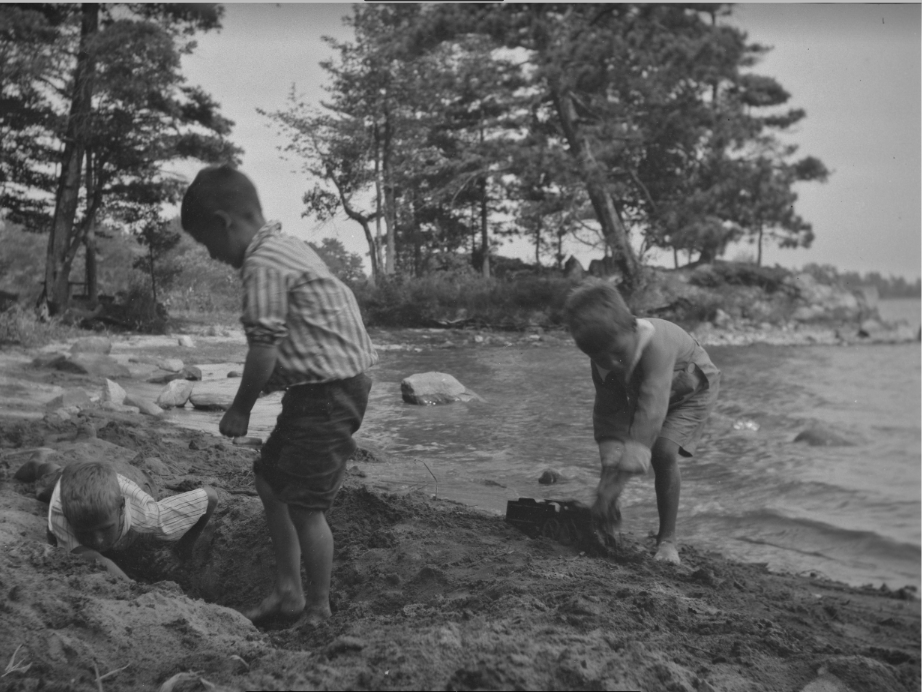
When they reached the sandbanks at the foot of Grenadier, the boys beached the little green boat, securing the bowline to a low branch on shore. One boy got out of the boat, and the others handed him the towels and picnic boxes. Then they all shed their shirts and shoes. Daring each other, and screaming at the top of their lungs, they waded into the cold river, splashing and carrying on with boy activities that still puzzled Roscoe. After a while, blue with cold, they ran shivering back to shore and toweled off. They wolfed down peanut-butter-and-jelly sandwiches, soda pop, and chocolate cake. Then they collapsed onto their towels and basked in the sun.
Meanwhile, Roscoe opened his official guide sack and offered seaweed cakes to the bullheads, which they devoured. As they ate, Roscoe went off to find the perfect shady spot for them to rest, under a submerged log in the sandy shallows. On shore, the boys roused themselves for a game of tag, scampering up and down the now scorching dunes.
Roscoe woke from his nap, his nose twitching. A strange, sweet, smell was drifting through the water. Fish have the ability to smell 1,000 times better than a dog, and a dog’s sense of smell is 1,000 times better than a human’s.
Roscoe pulled out his deptherm and noted a drop in the water temperature. Then, to check the wind, he watched a fluffy seagull feather floating on the water’s surface. The feather fluttered briskly, twirling around in the fresh breeze. Roscoe noted that the wind had changed direction.
The boys were now digging furiously in the sand, searching for buried treasure. At last, Christopher got up and went to check on the boat. Peering over the stern, he pulled up the Manila rope. “Hey, the bait can is gone!” he shouted. He ran back to where the others were still digging. “I was going to anchor near the deep hole out there to baitfish before we left,” he cried. “Because we haven’t really caught anything yet. But we can’t leave until we find that can. It belonged to my great-grandfather, and I don’t want to lose it. I’m going to dive for it.” And he took off for the water.
“We’ll go with you,” the other two yelled, tripping over each other to help launch the little green boat. They untied the line and shoved the boat off the sand. One boy hopped in and plunked the oars into the oarlocks. He began rowing, while Christopher put on his snorkel and face-mask and waded in to search around the sandy River floor.
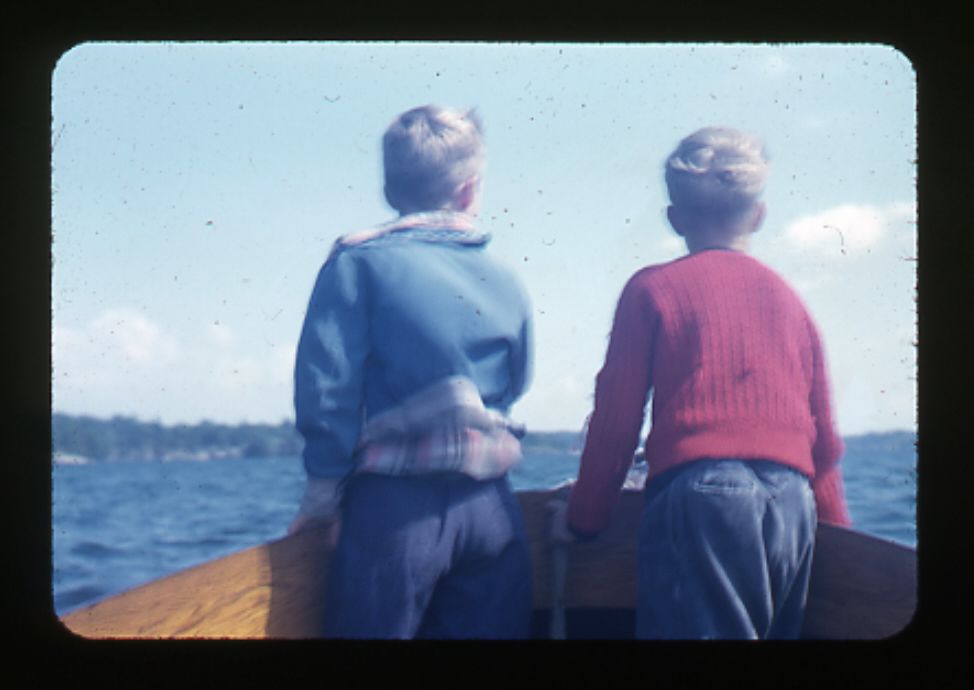
In the meantime, Roscoe had moved out into the channel, keeping an eye on the boys. Across the River he saw thunderheads on the horizon, with bolts of heat lightning jabbing the distant shore. Then, all of a sudden, he heard a crunching sound. The two boys in the boat had been watching the swimmer and had forgotten about the shoal at the mouth of the sandbanks’ cove. The outboard motor scraped hard over the rock, lifted up, and then banged back down onto the transom. The boy who had been rowing dropped the oars and ran back to look over the stern. “One of the propeller blades is bent!” he yelled. “Great. Now we can’t start the motor.”
[Illustrations by Sarah Bodine, ©2024, and photographs from the Keats Family Albums.]
By Sarah Bodine ©2024.
Sarah Bodine is a writer, editor, designer and book artist. She spent the summers of her childhood at her great-grandfather’s house, known as Cliff Cottage, on the Ontario side of the St Lawrence River near Rockport. The three Keats children were her cousins, and she often ran an outboard across the Canadian channel to spend the night on Pine Island. John Keats, fondly known as JK, made Roscoe Fish the main character in his bedtime stories, which were loved by all the children. To this day, the next island generation is forever looking for Roscoe under the boats in the slip.
[From the Editor: In April we present Episodes 4 & 5. Like Episodes 3 & 4 in March, we split the actual chapter into two parts - Each is a story on its own.
Those of us who read JK's (John Keats, "Of Time and an Island," 1974) books will smile and thank them for the opportunity to read more - even if in the imagination of Sarah and her cousins. Authors and readers will know that our TI Life articles are usually limited to 1,200-1,500 words - but this series of short stories about Roscoe are longer - long enough for all young River Rats to want more! The good news is there will be several more Episodes!]
Posted in: Volume 19, Issue 4, April 2024, Fiction, Current
Please click here if you are unable to post your comment.
